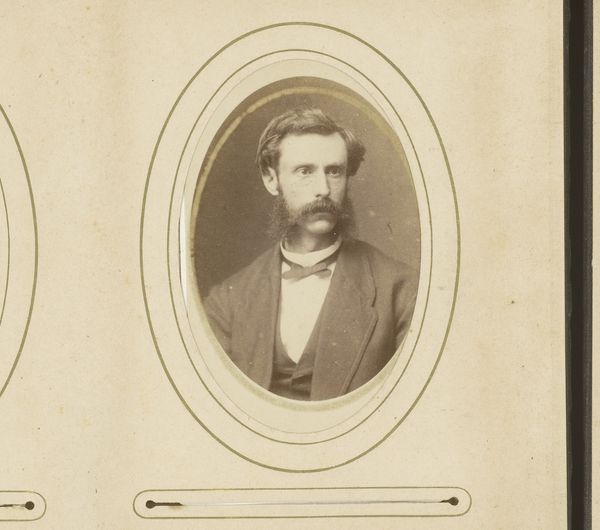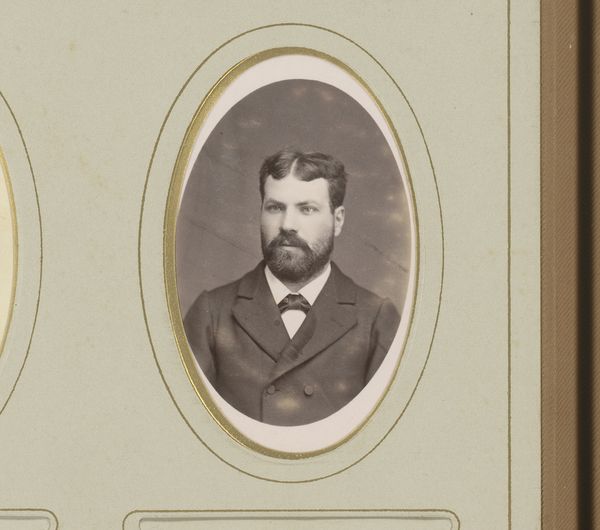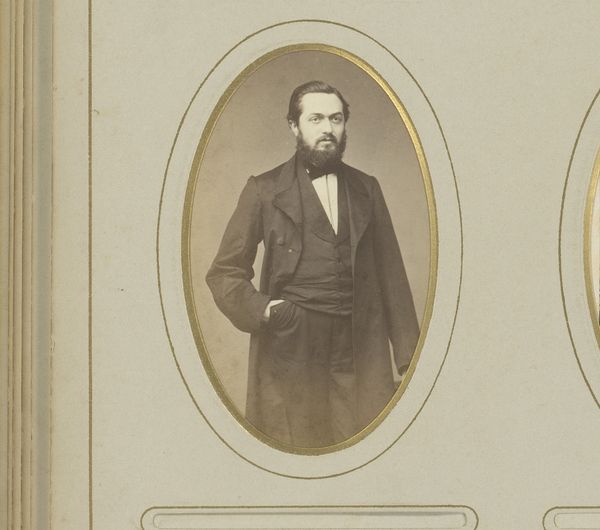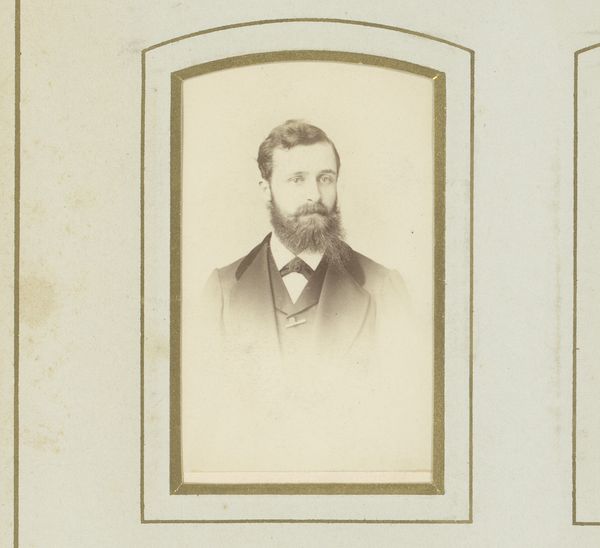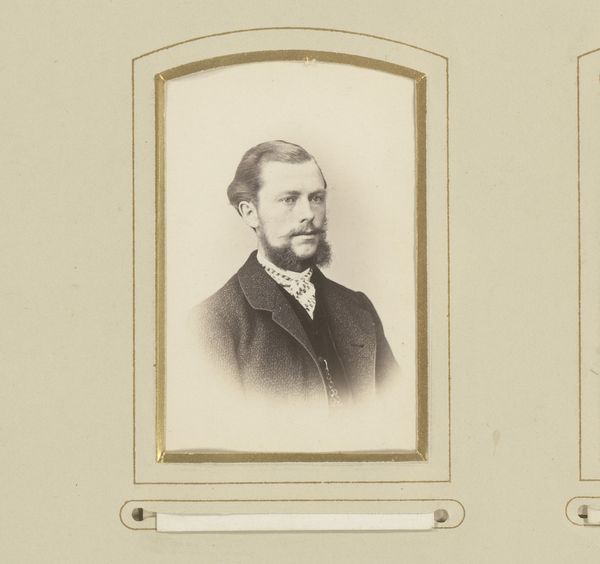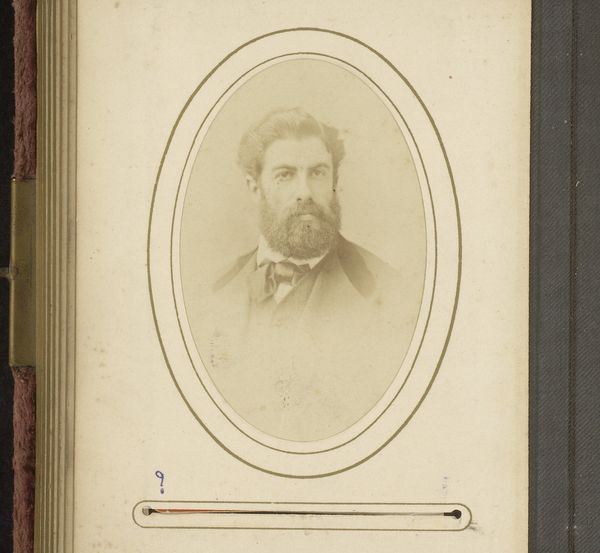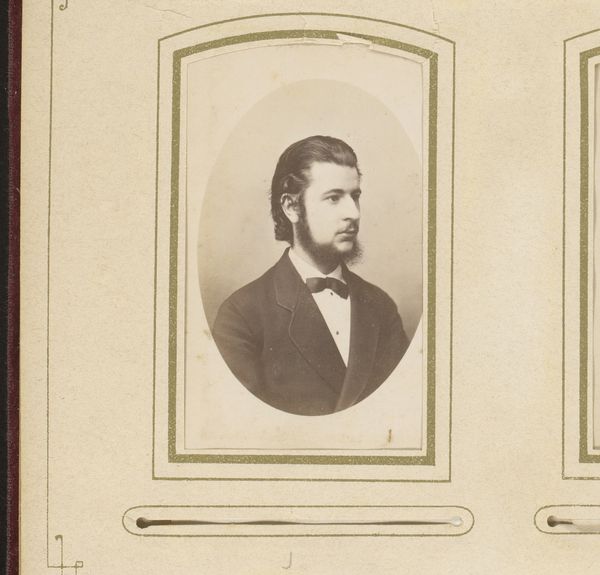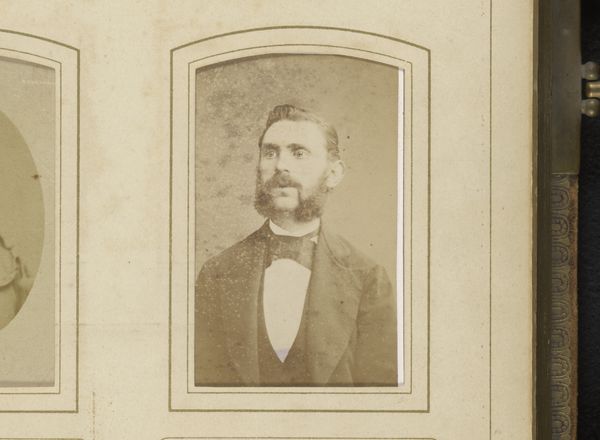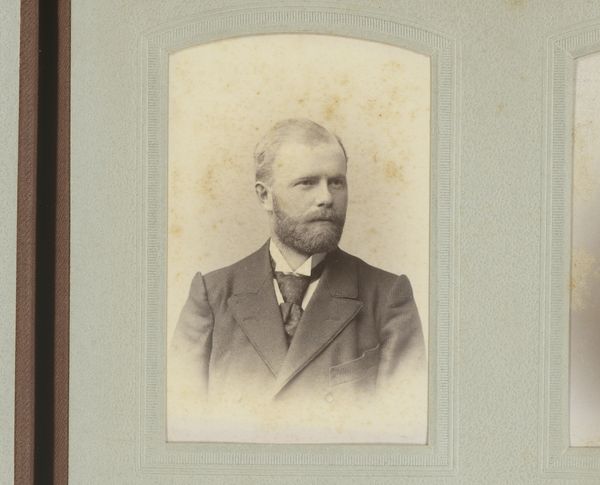
Dimensions: height 83 mm, width 51 mm
Copyright: Rijks Museum: Open Domain
Curator: Here we have Louis Robert Werner's "Portret van een man met baard," taken between 1861 and 1866. It's a gelatin-silver print currently residing at the Rijksmuseum. Editor: It immediately strikes me as both intimate and strangely distanced. The sepia tone lends a sense of faded grandeur, but there's a stillness that almost feels haunting. Curator: The framing enhances that feeling. The oval shape, the tight composition focusing primarily on the man’s face and upper body—it emphasizes the formality inherent in portraiture, yet, as you note, creates a poignant sense of isolation. It’s quite formally arresting. Editor: Absolutely. And think about the labor involved in producing a gelatin-silver print at that time. Each step, from coating the glass plate to developing the image, was a physical process demanding expertise. There's a huge amount of technical effort there. Curator: Precisely, and that craft imbues the work with meaning. Consider also the light—how it models the man’s face, highlighting the texture of his beard, drawing attention to his eyes. This careful arrangement directs our gaze, subtly dictating the narrative. Editor: What I find fascinating is how this technology made portraiture available to a broader section of society. While painting was for the elite, photographic portraits offered a form of memorialization, a way to capture a likeness within a specific historical and social context. Curator: A fascinating observation. We can even analyze the signifiers embedded within the man's clothing. His jacket, waistcoat, the style of his beard—all contribute to a constructed identity, an attempt to present a particular image to posterity. Editor: And perhaps a romanticized image. There's an intentionality to the photographic portrait, a performance inherent in the act of being photographed. These early photographs document both a likeness and a complex web of societal forces that helped define how people sought to be seen. Curator: Indeed, thinking about these complex historical forces at play enriches the way we interpret and connect with the image. Editor: Reflecting on the materiality reminds us that art isn't just about representation, it is about process.
Comments
No comments
Be the first to comment and join the conversation on the ultimate creative platform.
